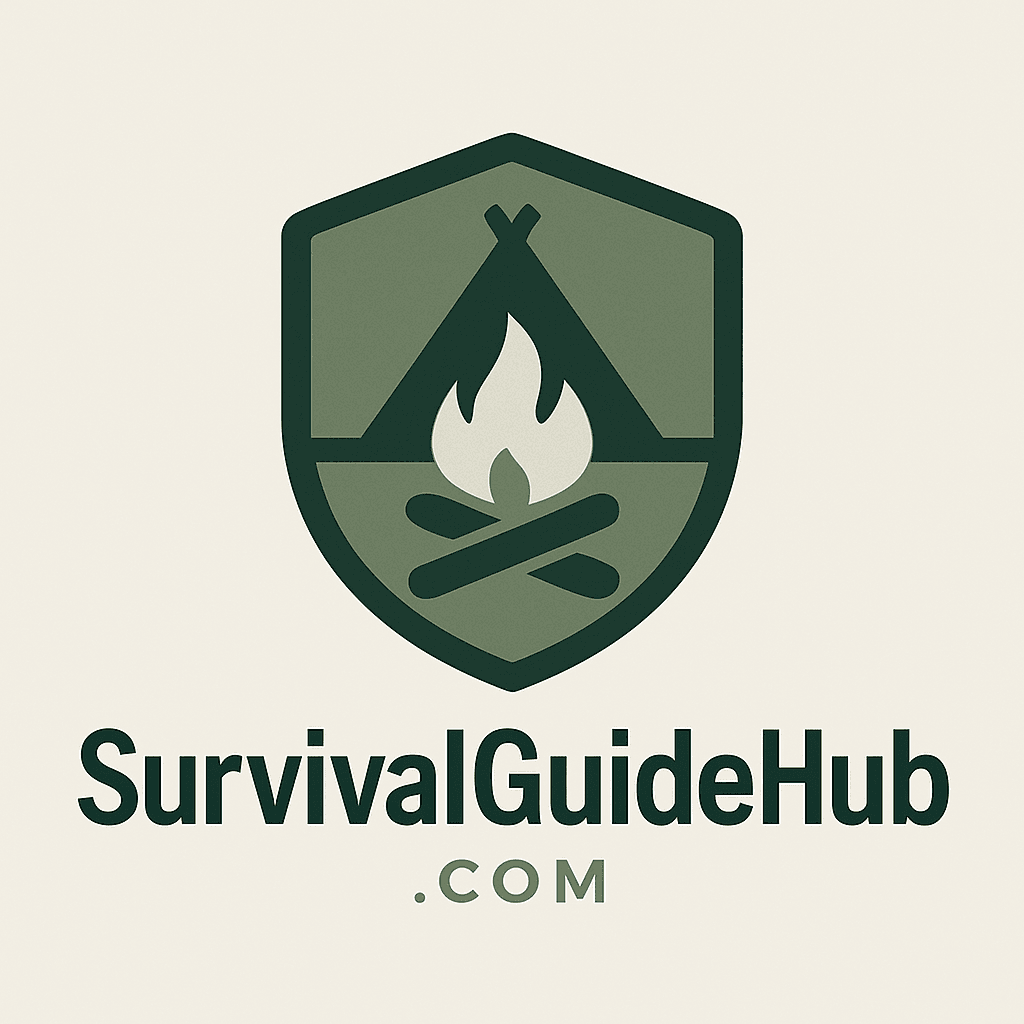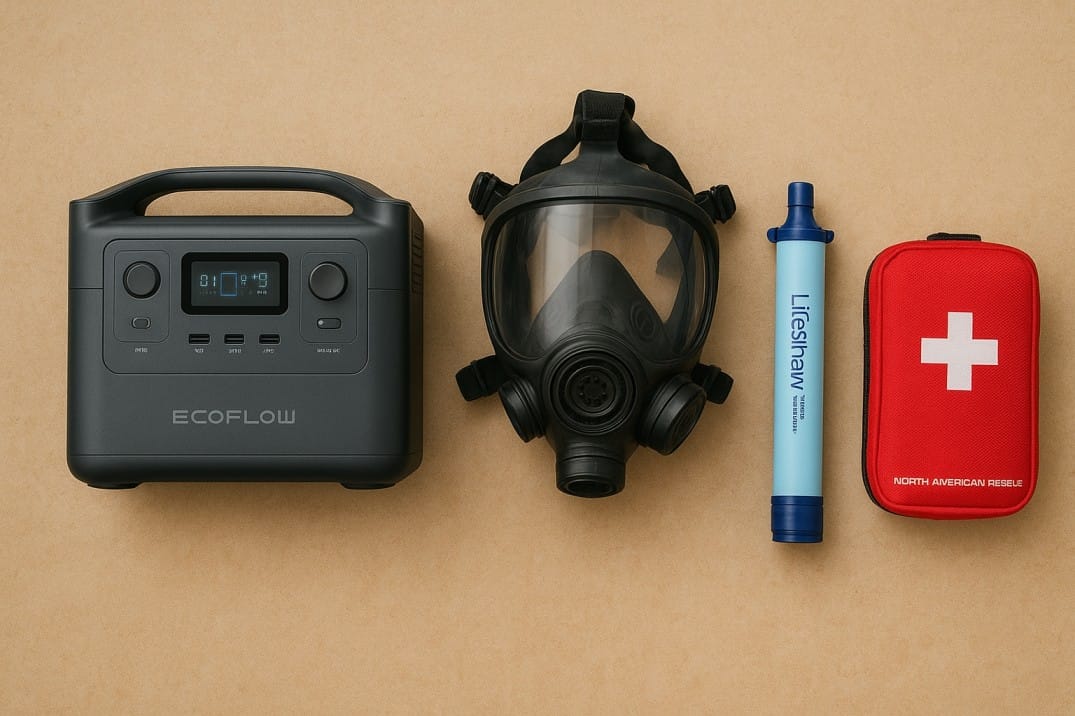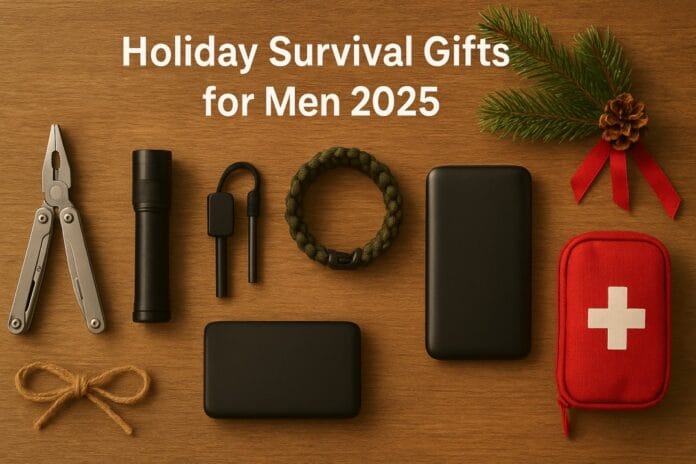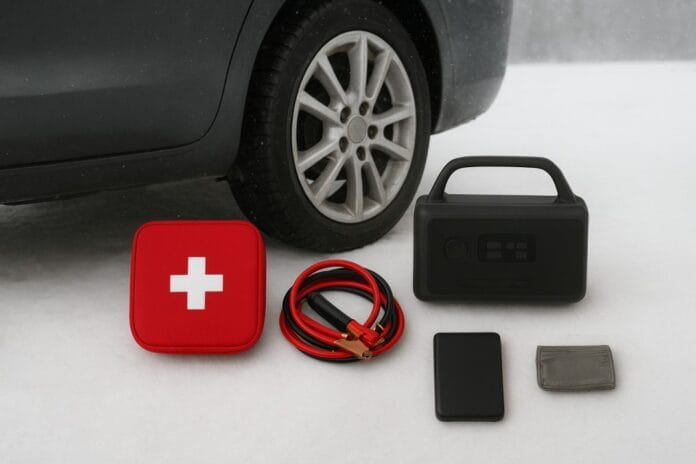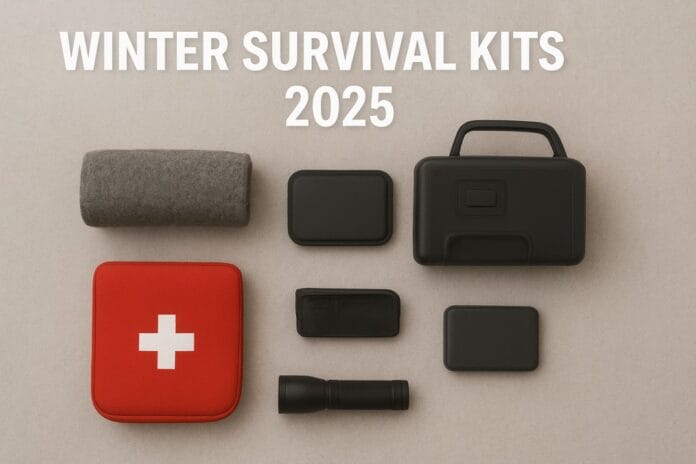Table of Contents
- Introduction: Why Emergency Supplies Are Surging in 2025
- The Modern Prepper Mindset: From Panic to Strategy
- Top 9 Emergency Supplies Americans Are Buying in 2025
- 3.1 Gas Masks & Respirators
- 3.2 Portable Power Stations / Solar Generators
- 3.3 Long-Term Emergency Food Kits
- 3.4 Water Filtration & Purification Tools
- 3.5 Comprehensive First Aid Kits
- 3.6 Emergency & NOAA Radios
- 3.7 Fireproof / Waterproof Document Storage
- 3.8 Thermal Blankets, Shelter & Insulation Gear
- 3.9 Personal Safety & Self‑Defense Tools
- How to Build a Balanced Emergency Kit (Avoid Overbuying)
- Maintenance, Rotation & Storage Tips
- Conclusion + Call to Action
- FAQ Section
1. Introduction: Why Emergency Supplies Are Surging in 2025
In 2025, Americans are once again turning to survival gear. Google Trends shows sharp increases in searches for “survival kit,” “gas masks,” “emergency food supply,” and “portable power station.” Reports from Business Insider confirm that U.S. shoppers are driving a surge in sales of essential gear, fueled by concerns over global tensions, domestic instability, and extreme weather events.
This is not panic buying. Unlike the short-lived waves of 2020, today’s prepping movement reflects a growing desire for practical resilience. Families want to protect themselves from blackouts, water shortages, and emergencies — without overspending on gimmicks.
This guide cuts through the noise, spotlighting the Top 9 emergency supplies 2025 buyers are prioritizing and offering tips to build a smart, balanced kit.
2. The Modern Prepper Mindset: From Panic to Strategy
Prepping in 2025 looks very different from the stereotypes of underground bunkers and hoarded canned beans. The modern prepper is:
- Practical – Gear must work both daily and during crises.
- Modular – Building layers of readiness: EDC (everyday carry), go-bag, and home supplies.
- Selective – Prioritizing proven, reliable products over flashy gadgets.
- Resilient – Combining physical gear with essential skills (navigation, first aid, fire-starting).
Let’s break down the top categories of emergency supplies Americans are investing in right now.
3. Top 9 Emergency Supplies Americans Are Buying in 2025
3.1 Gas Masks & Respirators
Why they’re trending: Concerns over global conflict, industrial accidents, and environmental hazards have fueled demand for personal protective gear.
What to look for:
- NIOSH-approved filters (P100 or CBRN)
- Full-face seal, anti-fog visor
- Replaceable cartridges
Amazon Pick: 3M Full Facepiece Reusable Respirator 6800
3.2 Portable Power Stations / Solar Generators
Why they’re trending: Grid instability and storm-driven blackouts mean portable power is a must.
What to look for:
- Wh capacity that matches needs (300Wh–700Wh)
- Pure sine wave inverter
- Solar + wall recharging
Amazon Picks:
3.3 Long-Term Emergency Food Kits
Why they’re trending: Rising food prices and supply chain shocks encourage families to stockpile.
What to look for:
- 25-year shelf life
- Balanced calories and protein
- Easy prep meals (just add water)
Examples: Mountain House Classic Bucket, Augason Farms 30-day Emergency Supply.
3.4 Water Filtration & Purification Tools
Why they’re trending: Safe water is essential during disasters.
What to look for:
- Removes bacteria and protozoa
- Portable, lightweight, durable
Amazon Pick: LifeStraw Personal Water Filter
3.5 Comprehensive First Aid Kits
Why they’re trending: Medical care may be delayed in disasters.
What to look for:
- Trauma supplies (tourniquet, gauze)
- Durable waterproof case
Amazon Pick: North American Rescue Individual First Aid Kit (IFAK)
3.6 Emergency & NOAA Radios
Why they’re trending: Communication is key when cell networks fail.
What to look for:
- NOAA weather bands
- Hand crank + solar charging
- Built-in flashlight
Examples: Kaito KA500, RunningSnail Solar Crank Radio.
3.7 Fireproof / Waterproof Document Storage
Why they’re trending: Disasters often destroy crucial personal documents.
What to look for:
- Fire resistance (1,700°F for 1 hr)
- Waterproof seal
Examples: SentrySafe Fireproof Box, AmazonBasics Fire & Water Safe.
3.8 Thermal Blankets, Shelter & Insulation Gear
Why they’re trending: Hypothermia risk in power outages or outdoor emergencies.
What to look for:
- Mylar blankets
- Compact bivvy sacks
- Lightweight tarps
Examples: SOL Emergency Blanket, Snugpak Bivi Bag.
3.9 Personal Safety & Self‑Defense Tools
Why they’re trending: Security concerns increase during social unrest.
What to look for:
- Legal in your state
- Reliable and durable
Examples: Fenix PD36 Tactical Flashlight, SABRE Pepper Spray.
4. How to Build a Balanced Emergency Kit (Avoid Overbuying)
Many first-time preppers make the mistake of panic buying. Instead:
- Start with basics: food, water, power, first aid.
- Build modularly: everyday carry, go-bag, home supply.
- Invest in skills: knowing how to purify water or apply first aid is as critical as owning gear.
- Rotate stock: replace expired food, meds, and batteries.
Check out our related guide: 10 Must-Have Emergency Supplies Americans Are Stockpiling in 2025.
5. Maintenance, Rotation & Storage Tips
- Store gear in cool, dry places.
- Test batteries, radios, and solar gear monthly.
- Keep first aid kits current with unexpired meds.
- Practice deploying your kit (e.g., pitching tarp, using stove).
6. Conclusion + Call to Action
Emergency supplies 2025 trends reveal that Americans aren’t panicking — they’re preparing smart. Whether it’s gas masks, power banks, water filters, or food kits, having the right supplies means security for your family.
👉 Don’t wait for a crisis. Start building your kit today, and ensure it’s practical, reliable, and ready when you need it most.
Check Price on Amazon – Emergency Gear Picks
7. FAQ Section
Q1: What are the most important emergency supplies in 2025?
A: The essentials include gas masks, portable power stations, long-term food kits, water filters, and first aid supplies.
Q2: How much emergency food should I store?
A: At least 2 weeks per person is recommended by FEMA, with many preppers aiming for 1–3 months.
Q3: Are gas masks really necessary for U.S. families?
A: Not for everyone, but they provide peace of mind and protection in industrial accidents, wildfires, or extreme crises.
Q4: What’s the difference between a go-bag and a home emergency kit?
A: A go-bag is lightweight for fast evacuation. A home kit is larger, designed for sheltering in place.
Q5: How do I keep my emergency kit affordable?
A: Start small with core essentials, buy multi-use items, and add gradually over time.
- Read more on: FEMA Emergency Supply List
